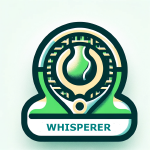The Science Behind the Quiet Eye
The Science Behind the Quiet Eye: Focus, Performance, and Precision
For years, I’ve taught two foundational concepts to help players improve how they watch the ball:
-
Use soft eyes to stay relaxed and aware.
-
Move your eyes, not your head to track the ball efficiently.
So imagine my delight when I recently discovered the research of Dr. Joan Vickers and her work on the Quiet Eye. Her findings didn’t just support these long-held beliefs—they elevated them with science.
The Quiet Eye is a calm, sustained visual fixation just before and during a movement. It explains why the way we see the ball directly impacts how well we hit it—especially under pressure.
Where It All Began: Golf and Visual Precision
Dr. Vickers first uncovered the Quiet Eye in golf, where calm focus is everything.
Using eye-tracking technology, she studied elite and novice golfers. The best performers held their gaze on the back of the ball for 2–3 seconds before putting—and crucially, through contact. Those who shifted their gaze too early—usually toward the hole—often mis-hit the shot.
That steady gaze gave the brain time to organize movement, block out distractions, and execute with precision. It was a game-changing insight into how visual control drives performance.
Tennis and the Quiet Eye: A Natural Fit
Tennis, like golf, thrives on precise timing and calm execution. Interestingly, I’ve been quietly teaching (pun intended) similar visual training for years, and have observed the same performance benefits in tennis.
Whether it’s a serve, return, or volley, players who lock their eyes on the ball’s contact point and maintain that focus through impact consistently hit cleaner, more accurate shots.
In a sport where players are often tempted to peek at their target the Quiet Eye keeps them grounded in the moment. It builds a stronger visual connection to the ball—and a calmer, more controlled performance.
Why the Quiet Eye Quiets the Mind
The Quiet Eye isn’t just about mechanics—it’s a tool to manage pressure.
During big points, the mind floods with noise: overthinking, what-ifs, and fear of outcomes. The Quiet Eye acts like an anchor, directing all focus to a single visual point. This reduces cognitive overload, calms the nervous system, and allows the body to move fluidly and instinctively.
In other words, the Quiet Eye helps players stay present—that elusive mental state where confidence lives and great tennis happens.
Why We Start Every Session With Ball-Watching Drills
This is exactly why we begin every training session with ball-watching skill development—in other words, training the Quiet Eye.
Before a player can hit with consistency, develop tactics, or execute patterns, they must learn to visually connect with the ball in a calm, deliberate way.
These drills are more than warm-ups. They’re mental tuning exercises. They sharpen attention, quiet internal chatter, and set the tone for everything that follows.
When trained consistently, the Quiet Eye becomes a mental and physical habit players can rely on—especially when the pressure is real and the margins razor-thin.
Why Most Errors Begin With the Eyes
One of my core coaching maxims is simple but powerful:
“90% of errors happen because players don’t truly watch the ball.”
It’s not just a catchy phrase—it’s a reflection of what I see every day on court.
Most mistakes aren’t caused by poor technique or bad decisions. They stem from a break in visual connection at the most critical moment: just before and through contact.
Whether it’s lifting the head too early, glancing at the opponent, or mentally jumping ahead to the next shot, these small lapses in focus lead to mis-hits, late timing, and unnecessary errors.
When players learn to actually see the ball—calmly, consistently, and completely—they unlock better timing, cleaner contact, and a steadier game under pressure.
The Quiet Eye doesn’t just support this belief—it explains why it works.




